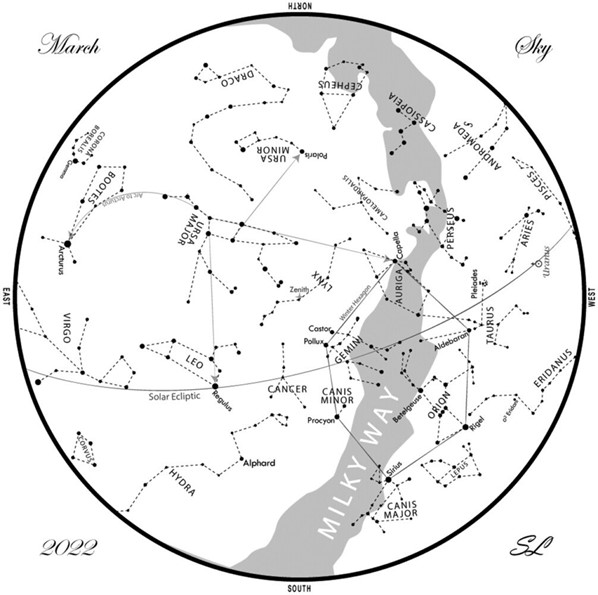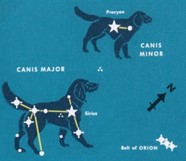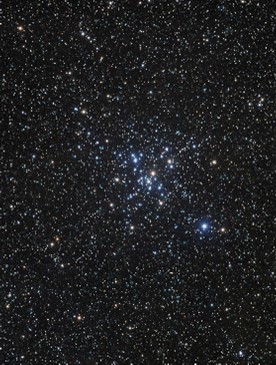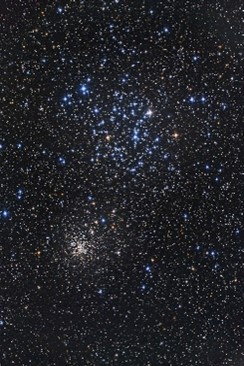By Astronomer Jim

Stars In March, with a focus on Canis Major, Canis Minor, and Gemini:
- March is named after the god of war, Mars.
- March is the beginning of spring in the northern hemisphere, this year occurring on March 20th. Days and nights are of equal length at the beginning of Spring (and are also equal when Autumn begins).
- As last month, March doesn’t have any bright planets in the early evening sky. However, with Orion still visible and Canis Major, Canis Minor, and Gemini still visible to the East of Orion, there are still plenty of bright constellations to see!
- On March 26th, from 8:30-9:30 pm, we will have “International Earth Hour.” It is an event that began in Australia fifteen years ago and now includes 192 countries (of the world’s total of 195). The purpose of the event is simply to increase awareness of the problems facing the Earth. The idea is that everyone should turn of all nonessential lights for that hour. The theme last year was climate change. The theme this year is nature loss and biodiversity.

Canis Major and Canis Minor:
- The scientific name for the “Big Dog” constellation is Canis Major and the scientific name for the “Little Dog” constellation is Canis Minor. Canis Major and Canis Minor, in Creek mythology, are the two hunting dogs to the east of Orion in the sky (see the above star chart). They each have one very bright star. The brightest star in Canis Major is Sirius, the brightest star in the entire sky! The brightest star in Canis Minor has the name of Procyon.
- In Canis Major is a star cluster called “M41” (after its discoverer, Messier, who made a catalog of faint star clusters and galaxies). M41 is over 2,000 light years away (each light year is 6 trillion miles). It can be seen as a faint smudge of stars below Sirius; with even binoculars, dozens of stars can be visible.
Gemini:
- Gemini is the constellation of “the twins” and is a constellation of the zodiac. Two bright stars are the heads of the twins. Castor, an orange-giant star, is the twin closest to Orion. Castor is also really a triple star, and each of those three stars is really a double star! Pollux is slightly brighter than Castor.
- Near the foot of the twin that is closest to Orion is a star cluster called “M35.” M35 is a bright star cluster and is just barely visible to an unassisted eye. With binoculars or a telescope, M35 can be seen as comprised of hundreds of stars!

Other Sky sights (as discussed last month):
- Orion is still in sky with his belt of three stars and a sword dangling down from his belt. Within the belt is
M42, a luminous gaseous nebula where new stars are constantly being formed—but it takes many millions of years for each new one!

- Lower on the horizon are the Pleiades, sometimes called the “seven sisters.” The Pleiades are a relatively close-by star cluster. With a sharp eye, 5-7 stars can be seen in the Pleiades without binoculars or a telescope.
March Planets and our Moon:
- On March 5th, near the east horizon in early morning twilight, you can see four planets at once: Venus and Mars will be close to each other and Saturn and Mercury will be very close together. Mercury, the planet that always stays close to the sun, will then return to being too close to the sun to see later in the month.
- On March 8th, the waxing crescent moon will be in Taurus, between the star Aldebaran and the Pleides. With binoculars, this will be very pretty. A waxing moon is one that is in phases that are “growing,” more lit-up from one night to the next.
- By mid-month, Venus will rise first (two hours before sunrise) and will be very bright in the early morning sky all month. Venus will be in a nearly half-moon phase, but a telescope is needed to see the phases of Venus (even a low-power telescope will be sufficient.
- Mars will rise next, and on March 15 will be only 4 degrees away from Venus.
- Next, Saturn will rise. On dawn of March 25th, Venus, Mars, and Saturn will be an early morning trio, with Venus far outshining the other two. Saturn will be the one closest to the eastern horizon.
- On the early morning of March 28th, a waning crescent moon will join Venus, Mars, and Saturn. And, Jupiter will be very low in the morning sky, so all together we’ll have four planets and the moon, all visible in a small part of the sky!
